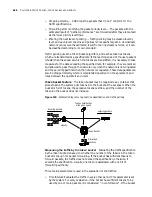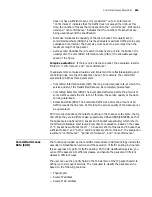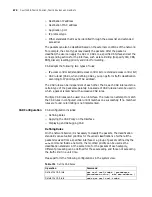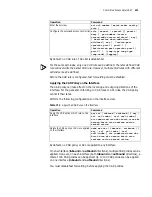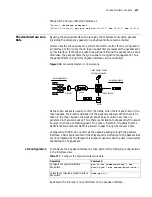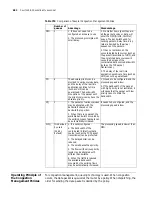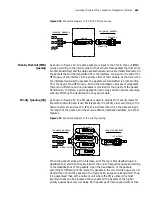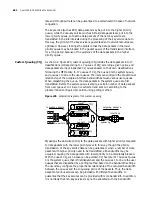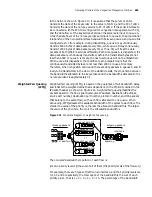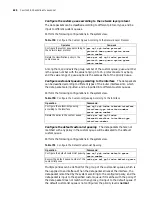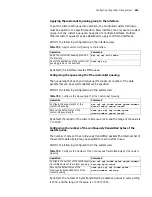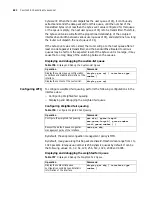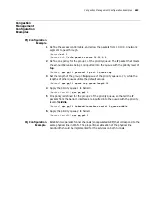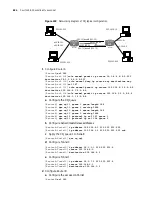
49
C
ONGESTION
M
ANAGEMENT
This chapter covers the following topics:
■
What is Congestion?
■
Congestion Management Policy Overview
■
Selecting Congestion Management Policies
■
Operating Principle of the Congestion Management Policies
■
Configuring Congestion Management
■
Congestion Management Configuration Examples
What is Congestion?
For a network unit, when the speed of the data packet is faster than the speed at
which this interface sends the data packet, congestion occurs on the interface. If
not enough memory space can be provided to store these data packets, some of
them will be lost. The loss of the data packet can cause the host or router that is
sending the data packet to resend this data packet because of a timeout which
can cause a communication failure.
There are many factors causing congestion. For example, when the data packet
flow enters the router through the high-speed link and is then transmitted
through the low speed link, congestion can occur. When the data packet flow
enters the router simultaneously from multiple interfaces and is transmitted from
one interface or the processor slows down, congestion may occur.
As shown in Figure 217, two LANs of one company are connected with each other
through the low speed link. When a user on LAN 1 sends a large number of data
packets to a user on LAN 2, it may cause congestion on the interface through
which router A of LAN 1 is connected to the low speed link. If an important
application is running between the servers of both LANs, while an unimportant
application is running between two PCs, the important application will be
influenced.
Summary of Contents for Router 3032
Page 1: ...http www 3com com 3Com Router Configuration Guide Published March 2004 Part No 10014299...
Page 4: ...VPN 615 RELIABILITY 665 QOS 681 DIAL UP 721...
Page 6: ...2 ABOUT THIS GUIDE...
Page 7: ...I GETTING STARTED Chapter 1 3Com Router Introduction Chapter 2 3Com Router User Interface...
Page 8: ...4...
Page 16: ...12 CHAPTER 1 3COM ROUTER INTRODUCTION...
Page 34: ...30...
Page 60: ...56 CHAPTER 3 SYSTEM MANAGEMENT...
Page 98: ...94 CHAPTER 6 DISPLAY AND DEBUGGING TOOLS...
Page 110: ...106...
Page 114: ...110 CHAPTER 8 INTERFACE CONFIGURATION OVERVIEW...
Page 158: ...154 CHAPTER 10 CONFIGURING WAN INTERFACE...
Page 168: ...164...
Page 188: ...184 CHAPTER 13 CONFIGURING PPPOE CLIENT...
Page 192: ...188 CHAPTER 14 CONFIGURING SLIP Router ip route static 0 0 0 0 0 0 0 0 10 110 0 1...
Page 248: ...244 CHAPTER 16 CONFIGURING LAPB AND X 25...
Page 320: ...316...
Page 330: ...326 CHAPTER 20 CONFIGURING IP ADDRESS...
Page 362: ...358 CHAPTER 21 CONFIGURING IP APPLICATION...
Page 374: ...370 CHAPTER 23 CONFIGURING IP COUNT...
Page 406: ...402 CHAPTER 25 CONFIGURING DLSW...
Page 408: ...404...
Page 452: ...448 CHAPTER 29 CONFIGURING OSPF...
Page 482: ...478 CHAPTER 30 CONFIGURING BGP...
Page 494: ...490 CHAPTER 31 CONFIGURING IP ROUTING POLICY...
Page 502: ...498...
Page 508: ...504 CHAPTER 33 IP MULTICAST...
Page 514: ...510 CHAPTER 34 CONFIGURING IGMP...
Page 526: ...522 CHAPTER 36 CONFIGURING PIM SM...
Page 528: ...524...
Page 532: ...528 CHAPTER 37 CONFIGURING TERMINAL ACCESS SECURITY...
Page 550: ...546 CHAPTER 38 CONFIGURING AAA AND RADIUS PROTOCOL...
Page 590: ...586 CHAPTER 40 CONFIGURING IPSEC...
Page 599: ...IX VPN Chapter 42 Configuring VPN Chapter 43 Configuring L2TP Chapter 44 Configuring GRE...
Page 600: ...596...
Page 638: ...634 CHAPTER 43 CONFIGURING L2TP...
Page 649: ...X RELIABILITY Chapter 45 Configuring a Standby Center Chapter 46 Configuring VRRP...
Page 650: ...646...
Page 666: ...662...
Page 670: ...666 CHAPTER 47 QOS OVERVIEW...
Page 700: ...696 CHAPTER 49 CONGESTION MANAGEMENT...
Page 706: ...702 CHAPTER 50 CONGESTION AVOIDANCE...
Page 707: ...XII DIAL UP Chapter 51 Configuring DCC Chapter 52 Configuring Modem...
Page 708: ...704...
Page 762: ...758 CHAPTER 52 CONFIGURING MODEM...




